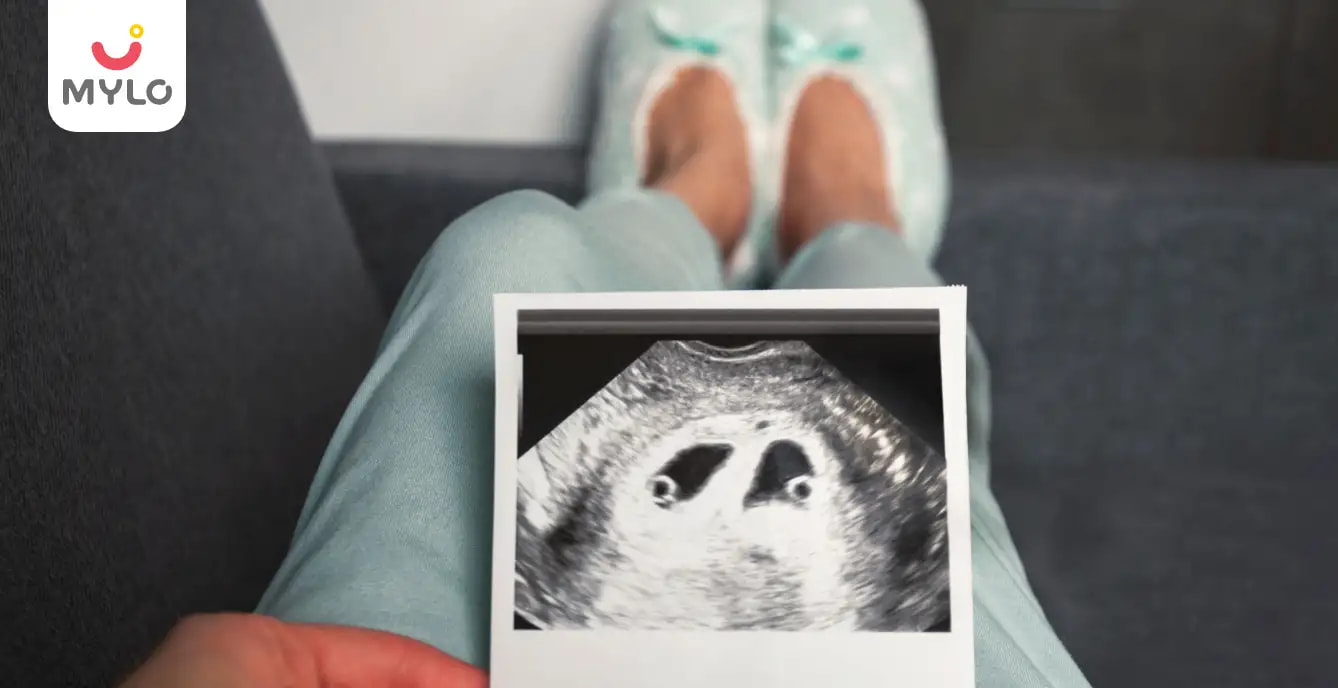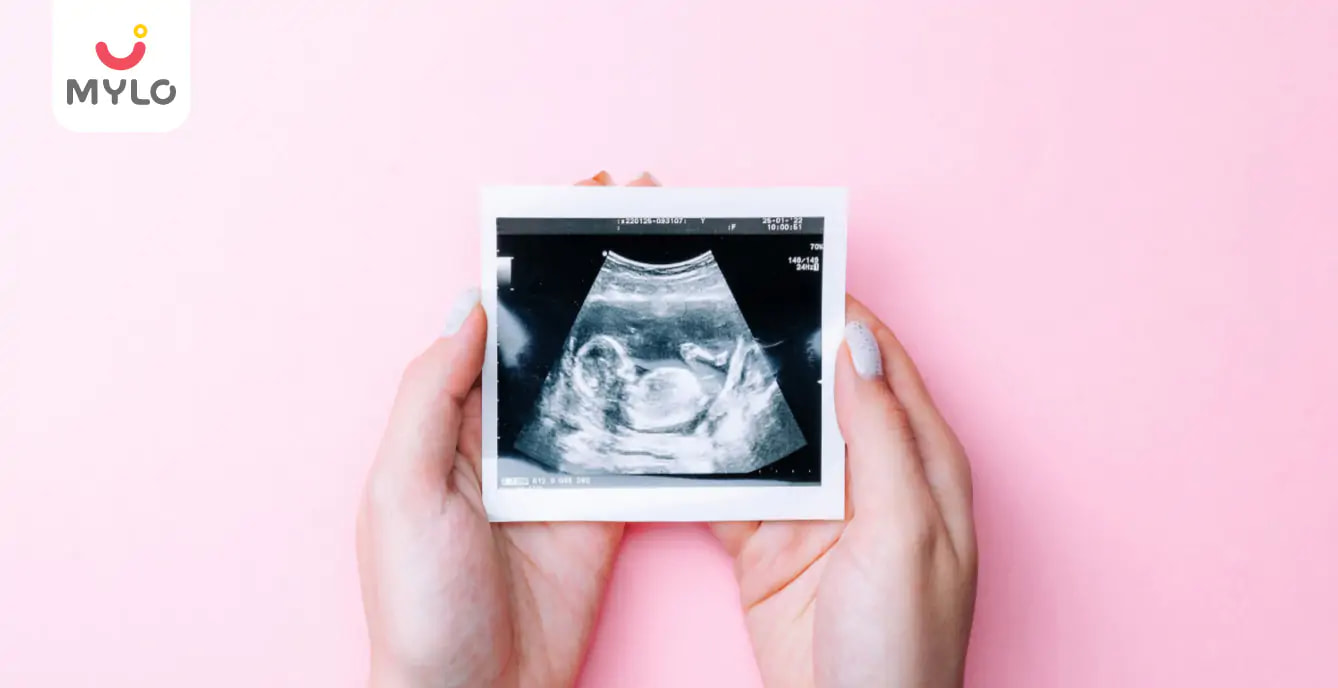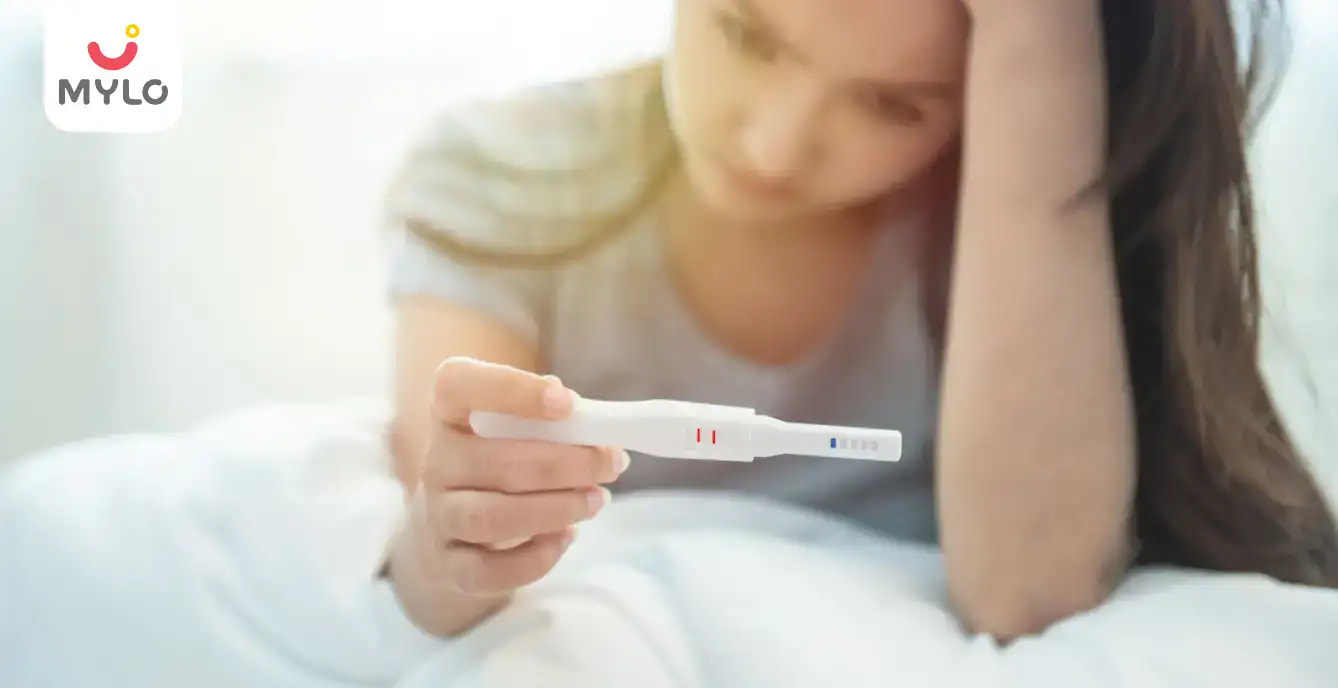Home

Twins & Triplets

Difference Between Single and Twin Pregnancy Symptoms: How to Identify the Signs
In this Article

Twins & Triplets
Difference Between Single and Twin Pregnancy Symptoms: How to Identify the Signs
Updated on 3 November 2023
Pregnancy is a special time in a woman's life. It is a time of excitement, anticipation, and sometimes anxiety. When a woman is pregnant, her body undergoes many changes. However, the symptoms of pregnancy can vary depending on whether it is a single or twin pregnancy. This article will explore the difference between single and twin pregnancy symptoms and provide guidance on how to identify the signs of twin pregnancy.
Understanding Single and Twin Pregnancies
Pregnancy is the period when a baby grows inside a woman's uterus. A single pregnancy means that only one baby is growing inside the uterus, while a twin pregnancy means that there are two babies growing inside the uterus.
In rare cases, there can be more than two babies, which is known as a multiple pregnancy. However, a twin pregnancy is the most common type of multiple pregnancy.
A twin pregnancy can be either identical or fraternal. Identical twins are formed when a single fertilized egg splits into two embryos. Fraternal twins, on the other hand, are formed when two separate eggs are fertilized by two different sperm.
You may also like: Vanishing Twin Syndrome: Causes, Symptoms & Treatment
Identifying the Signs of Implantation with Twins
Implantation is the process by which the fertilized egg attaches itself to the lining of the uterus. Women who are pregnant with twins may experience different signs of implantation such as implantation cramping twins than those who are pregnant with a single baby.
1. Implantation Bleeding
Implantation bleeding is a common sign of implantation. It occurs when the fertilized egg implants itself into the lining of the uterus. Women who are pregnant with twins may experience more bleeding than those who are pregnant with a single baby.
2. Implantation Cramping Twins
Cramping is another sign of implantation. Women who are pregnant with twins may experience more cramping than those who are pregnant with a single baby.
3. Spotting
Spotting is a common sign of implantation. Women who are pregnant with twins may experience more spotting than those who are pregnant with a single baby.
hCG Levels Singleton vs Twins
One of the key differences between twin and singleton pregnancy is the difference between the hCG levels. hCG levels, or human chorionic gonadotropin levels, are a hormone produced during pregnancy. The hormone is initially produced by the cells that form the placenta and later by the placenta itself. The levels of hCG increase rapidly in early pregnancy and then decline later on.
Twin pregnancies can have 30% to 50% higher hCG levels than singleton pregnancies at the same time in early pregnancy. This means that the levels of hCG are typically higher in women carrying twins compared to those carrying a single baby.
However, it's important to note that there can be a big overlap between the first hCG levels in singleton and twin pregnancies, with ranges of 5-397 for singletons and 48-683 for twins. This overlap makes it difficult to solely rely on hCG levels to determine if a pregnancy is a singleton or twin.
Difference Between Single and Twin Pregnancy Symptoms
The symptoms of pregnancy can vary depending on whether it is a single or twin pregnancy. In general, women who are pregnant with twins experience more severe symptoms than those who are pregnant with a single baby. This is because the body is working harder to support two babies instead of one.
Signs of Single Pregnancy
Women who are pregnant with a single baby may experience the following symptoms:
1. Morning Sickness
Morning sickness is one of the most common symptoms of pregnancy. It is characterized by nausea and vomiting and usually occurs in the first trimester. However, some women may experience it throughout their pregnancy.
2. Fatigue
Fatigue is another common symptom of pregnancy. Women who are pregnant may feel more tired than usual, especially during the first and third trimesters.
3. Breast Changes
Breast changes are another common symptom of pregnancy. Women may notice that their breasts are tender, sore, or swollen. They may also experience nipple discharge.
Signs of Twin Pregnancy
Women who are pregnant with twins may experience the following twin pregnancy symptoms:
1. Severe Morning Sickness
Women who are pregnant with twins may experience more severe morning sickness than those who are pregnant with a single baby. They may also experience nausea and vomiting throughout their pregnancy.
2. Rapid Weight Gain
Women who are pregnant with twins may gain weight more quickly than those who are pregnant with a single baby. This is because the body is working harder to support two babies.
3. Increased Appetite
Women who are pregnant with twins may experience an increased appetite. This is because the body needs more nutrients to support two babies.
4. Early Baby Bump
One of the most noticeable twin pregnancy symptoms is the appearance of an early baby bump. Women who are carrying twins are likely to show a baby bump as early as 6 to 8 weeks of pregnancy.
How to Confirm a Twin Pregnancy?
While noticing signs of twin pregnancy can help you identify whether you’re pregnant with twins or not but it’s important to know how to confirm a twin pregnancy. While hCG levels singleton vs twins can vary greatly but there are not a confirmation of whether the pregnancy is singleton or twin. The only way to confirm a twin pregnancy is through an ultrasound.
An ultrasound uses sound waves to create an image of the fetus(es) inside the uterus. It can confirm the number of fetuses and their gestational age. An ultrasound can be performed as early as six weeks into the pregnancy. It is safe and non-invasive.
FAQs
1. How does twin pregnancy feel different?
Women who are pregnant with twins may experience more severe symptoms than those who are pregnant with a single baby. Signs of twin pregnancy may include more severe morning sickness, rapid weight gain, and increased appetite.
2. Does a twin pregnancy have many complications?
Twin pregnancies are associated with a higher risk of complications than singleton pregnancies. These complications may include preterm labor, preeclampsia, and gestational diabetes.
3. How is labor different with a twin pregnancy?
Labor with a twin pregnancy is different than with a singleton pregnancy. It may be more intense and may require a cesarean section.
The Bottomline
Pregnancy is a special time in a woman's life. Knowing the difference between single and twin pregnancy symptoms early on can help identify whether you’re pregnant with twins or not. Women who are pregnant with twins may experience more severe symptoms than those who are pregnant with a single baby. If you suspect that you are pregnant with twins, the only way to confirm it is through an ultrasound.
References
1. Obiechina Nj, Okolie V, Eleje G, Okechukwu Z, Anemeje O. (2011). Twin versus singleton pregnancies: the incidence, pregnancy complications, and obstetric outcomes in a Nigerian tertiary hospital. Int J Womens Health.
2. Wang Y, Wu N, Shen H. (2021). A Review of Research Progress of Pregnancy with Twins with Preeclampsia. Risk Manag Healthc Policy.



Written by
Anupama Chadha
Anupama Chadha, born and raised in Delhi is a content writer who has written extensively for industries such as HR, Healthcare, Finance, Retail and Tech.
Read MoreGet baby's diet chart, and growth tips

Related Articles
Related Questions
Influenza and boostrix injection kisiko laga hai kya 8 month pregnancy me and q lagta hai ye plz reply me

Hai.... My last period was in feb 24. I tested in 40 th day morning 3:30 .. That is faint line .. I conculed mylo thz app also.... And I asked tha dr wait for 3 to 5 days ... Im also waiting ... Then I test today 4:15 test is sooooo faint ... And I feel in ma body no pregnancy symptoms. What can I do .

Baby kicks KB Marta hai Plz tell mi

PCOD kya hota hai

How to detect pcos

Related Topics
RECENTLY PUBLISHED ARTICLES
our most recent articles

Diet & Nutrition
গর্ভাবস্থায় আলুবোখরা: উপকারিতা ও ঝুঁকি | Prunes During Pregnancy: Benefits & Risks in Bengali

Diet & Nutrition
গর্ভাবস্থায় হিং | ঝুঁকি, সুবিধা এবং অন্যান্য চিকিৎসা | Hing During Pregnancy | Risks, Benefits & Other Treatments in Bengali

Women Specific Issues
স্তনের উপর সাদা দাগ: লক্ষণ, কারণ এবং চিকিৎসা | White Spots on Nipple: Causes, Symptoms, and Treatments in Bengali

Diet & Nutrition
গর্ভাবস্থায় পোহা: উপকারিতা, ধরণ এবং রেসিপি | Poha During Pregnancy: Benefits, Types & Recipes in Bengali

Diet & Nutrition
গর্ভাবস্থায় মাছ: উপকারিতা এবং ঝুঁকি | Fish In Pregnancy: Benefits and Risks in Bengali

Diet & Nutrition
গর্ভাবস্থায় রেড ওয়াইন: পার্শ্ব প্রতিক্রিয়া এবং নির্দেশিকা | Red Wine During Pregnancy: Side Effects & Guidelines in Bengali
- ইনার থাই চ্যাফিং: কারণ, উপসর্গ এবং চিকিৎসা | Inner Thigh Chafing: Causes, Symptoms & Treatment in Bengali
- গর্ভাবস্থায় ব্রাউন রাইস: উপকারিতা ও সতর্কতা | Brown Rice During Pregnancy: Benefits & Precautions in Bengali
- Velamentous Cord Insertion - Precautions, Results & Safety
- Unlock the Secret to Flawless Skin: 7 Must-Have Qualities in a Face Serum
- Unlock the Secret to Radiant Skin: How Vitamin C Serum Can Transform Your Complexion
- Gender No Bar: 10 Reasons Why Everyone Needs a Body Lotion
- Unlock the Secret to Radiant Skin How to Choose the Perfect Body Lotion for Your Skin Type
- Top 10 Reasons to Apply a Body Lotion After Every Bath
- Communication in Toddlers: Milestones & Activities
- How to Improve Vocabulary for Toddlers?
- A Comprehensive Guide to Understanding Placenta Accreta
- Vulvovaginitis in Toddlers Causes, Symptoms and Treatment
- A Comprehensive Guide to Understanding Cerebral Palsy in Children
- Bitter Taste in Mouth During Pregnancy: Understanding the Causes and Remedies


AWARDS AND RECOGNITION

Mylo wins Forbes D2C Disruptor award

Mylo wins The Economic Times Promising Brands 2022
AS SEEN IN
















- Mylo Care: Effective and science-backed personal care and wellness solutions for a joyful you.
- Mylo Baby: Science-backed, gentle and effective personal care & hygiene range for your little one.
- Mylo Community: Trusted and empathetic community of 10mn+ parents and experts.
Product Categories
baby carrier | baby soap | baby wipes | stretch marks cream | baby cream | baby shampoo | baby massage oil | baby hair oil | stretch marks oil | baby body wash | baby powder | baby lotion | diaper rash cream | newborn diapers | teether | baby kajal | baby diapers | cloth diapers |








